McGuinness travelled a long way but his past was so ruthless it cannot be ignored
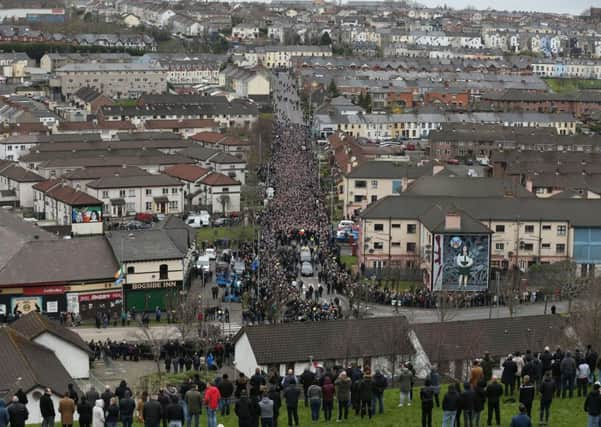

There was a stand for reporters outside the church, where – amid a large crowd outside –we listened to the service inside on speakers.
Afterwards I talked to some of the crowd and also to some big names who attended, including briefly Bill Clinton (pages four and five).
Advertisement
Hide AdAdvertisement
Hide AdIt was a major day in the history of Northern Ireland, and there was a significant air of reconciliation and even catharsis about it. The music in the service was wonderful and much of the words were thought provoking.
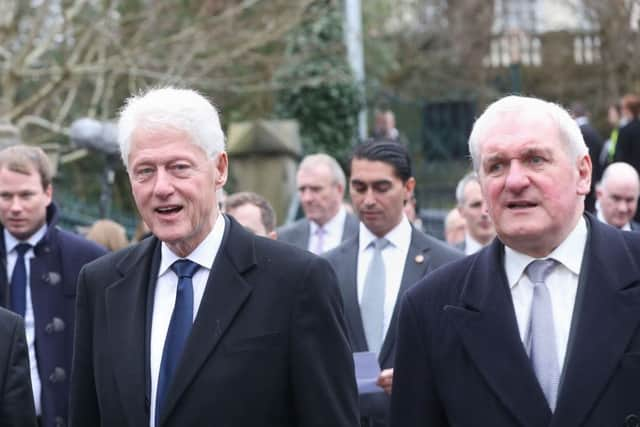

It was an important gesture from Martin McGuinness, presumably decided by him in advance, not to try to have a ‘military’ funeral.
It was also a strange and complicated day for the many people who abhor IRA terrorism, who are concerned at how that terror is being depicted retrospectively but who also recognise that Mr McGuinness was central to the success of the Belfast Agreement.
There has of course been a bitter divide within unionism ever since 1998 as to whether that agreement was the right thing to do.
Advertisement
Hide AdAdvertisement
Hide AdIt has long been clear that Martin McGuinness and Gerry Adams were perhaps the only people who could have carried the IRA with them in the break from violence.
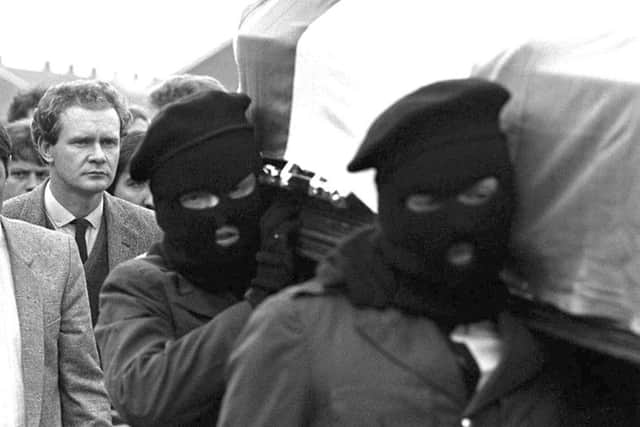

But we will soon find out if, among those two, only Mr McGuinness was willing to make Northern Ireland work, even though he would have preferred Irish unity.
The deep respect for Mr McGuinness among nationalists in Londonderry, even among those of them who did not support the IRA, was apparent on Thursday.
But Thursday also not only illustrated the crisis that faces unionists on legacy matters, it exacerbated it.
Advertisement
Hide AdAdvertisement
Hide AdThe attendance of people such as President Bill Clinton cemented the impression that Mr McGuinness was a statesman to be admired.
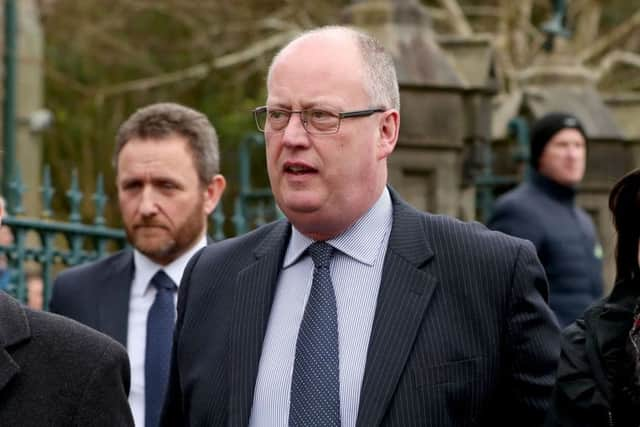

Few people want to speak ill of the dead, and when the Sinn Fein former deputy first minister died there were tributes from unionist politicians, Protestant churchmen and British politicians that either declined to mention his IRA past or did so briefly.
Some statements, such as from the head of the Methodist Church in Ireland, were almost glowing while others, such as that from his Church of Ireland counterpart, were warm but with caveats.
Warm words does flow when major public figures die. It was the case when Ian Paisley died, when there was minimal reference to the fact that for almost 40 years he toppled unionist leaders who compromised, before then making one of the biggest compromises unionism ever made – having a Sinn Fein deputy first minister.
Advertisement
Hide AdAdvertisement
Hide AdThe only major Ulster Unionist leader Dr Paisley did not depose was the one who avoided disagreements with him, James Molyneaux,
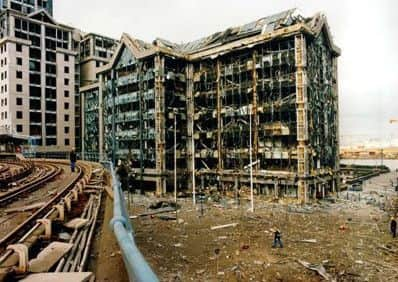

It was a moderate politician, the former Alliance Party leader John Cushnahan, who spoke up amid the deluge of tributes to Rev Paisley to say he should not get such praise because he merely did “the right thing at the end”.
Mr Cushnahan said: “Tragically thousands more people were to lose their lives or suffer serious injury before Sinn Féin and the DUP embraced what already had been on offer in 1974. The belated conversion of both should not result in an attempt to naively rewrite history.”
This week has been difficult, to put it mildly, for many IRA victims,
Advertisement
Hide AdAdvertisement
Hide AdAnd notwithstanding the sensitivities of the McGuinness family, who like any family are in no way answerable for actions of their father, the feelings of victims cannot be held over for discussion at a later point – or not by a unionist paper such as this one.
In 2010 following a BBC documentary about Gerry Adams, in which celebrities were joined by churchmen in lauding the Sinn Fein president, we carried a report about a pensioner, widowed by the IRA, who said she had felt ill “all day” after the trauma of seeing Mr Adams get such gushing treatment.
This week a can of worms called legacy, that has been partially open for a long time, was wrenched further wide.
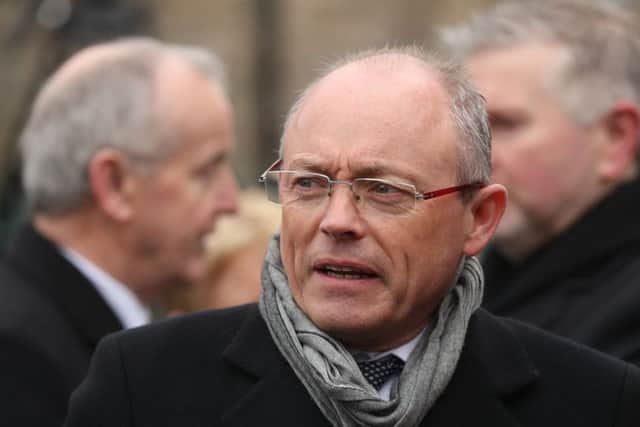

Here are examples of the oddness of Thursday:
Among the mourners was the Director of Public Prosecutions Barra McGrory, and the PSNI chief constable, George Hamilton. That is no surprise at the funeral of a deputy first minister.
Advertisement
Hide AdAdvertisement
Hide AdMr McGrory has said he would recuse himself from any decision involving former clients but even so the presence of these men does flag up how strange it would have been if Mr McGuinness had ever been arrested and charged.
And if there is a perception that it is unlikely any leading Sinn Fein politician with a senior IRA background would be arrested and charged, people will ask why elderly soldiers face that fate? Whatever those soldiers might have done it cannot compare to what Mr McGuinness did.
Think of two latter types of IRA killing. Patsy Gillespie has been mentioned in connection with the IRA in the NW, but think why the Provisionals began to target such people: Northern Ireland was getting ever more normal, Sinn Fein was far behind the SDLP and the security forces were getting better at their own security.
It was a calculated strategy to instil ‘terror’ among those who worked with, as opposed to in, the military (as was the Teebane war crime).
Advertisement
Hide AdAdvertisement
Hide AdSimilarly the calculated huge bombing of commercial targets in London, such as Bishopsgate in 1993, was a ruthless attempt to make headway where the ballot box was failing. When the 1994 ceasefire failed to get movement at the pace republicans wanted, they blew up the Docklands in 1996.
It was part of the peculiarity of this week that the great and the good in London were vowing that Islamic terror would never succeed there when Mr McGuinness was being praised by leaders here.
This all followed after years of murder or attempted murder of politicians, judges and, latterly, civil servants.
We do not know if, for example, Mr McGuinness opposed the 1996 ceasefire break. Perhaps there was a long debate between doves and hawks in the IRA.
Advertisement
Hide AdAdvertisement
Hide AdFor example, when on the 25th anniversary of their murder I wrote about the IRA killing of two policement at point blank range in Belfast city centre in 1990, a grisly episode that has always stuck in my mind (two gunmen ran up behind them and shot them in the head), an anonymous republican phoned me with information on the killings.
“They were bad boys,” he said of the gunmen. “It shouldn’t have happened. There were talks ongoing.”
If Ian Paisley had died at the same age as Martin McGuinness, he would have gone to his grave in 1992 – more than a decade before the final compromising phase of the DUP leader’s career.
Who knows if Mr McGuinness would have travelled even further in his journey from violence if he had lived 20 more years. Perhaps, if there had been an environmment in which he would not have faced prosecution, he would have told us more.
Advertisement
Hide AdAdvertisement
Hide AdBertie Ahern said he could “totally” understand why Martin McGuinness joined the IRA, and those of us who were not in the Bogside at that time, and of his age, cannot be sure how we would have reacted to events.
But it is not hard either to understand how the UK state would have been tempted to crush such violence. It rightly resisted that temptation.
Many people died because the state allowed Mr McGuinness to end violence at his own pace, and we must be mindful of those victims this week, in much the same way that so many people who were not of Mr McGuinness’s tradition have been mindful of the feelings of his supporters.